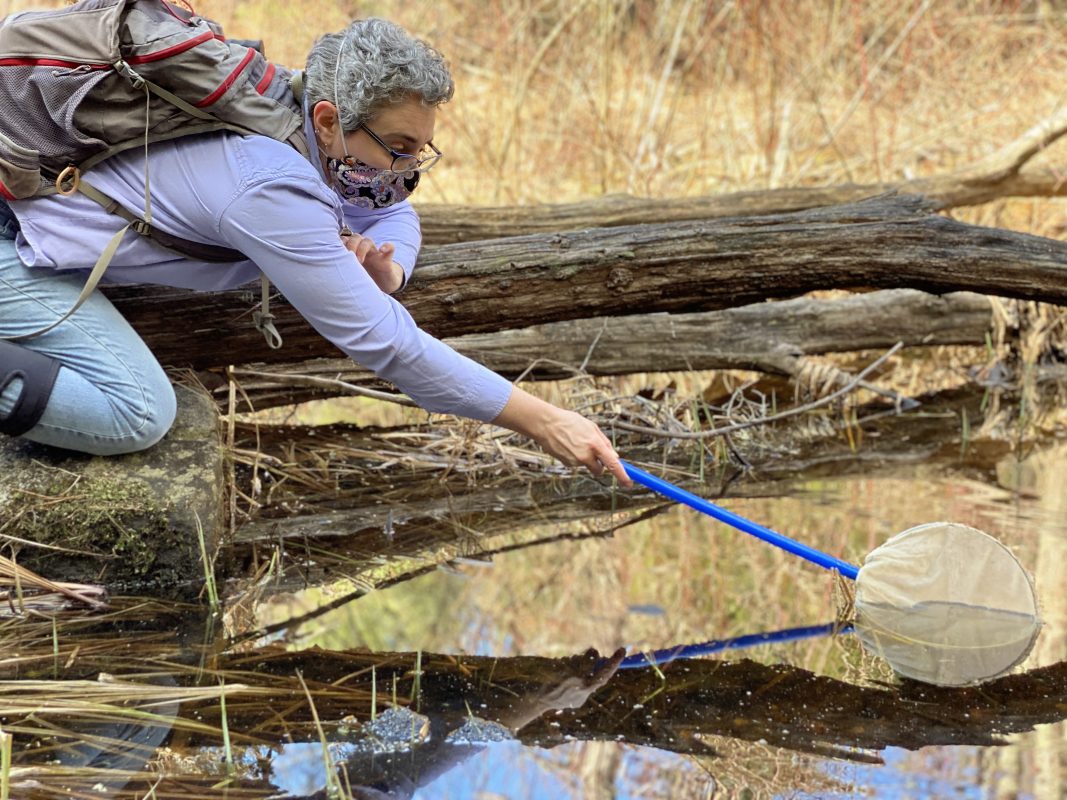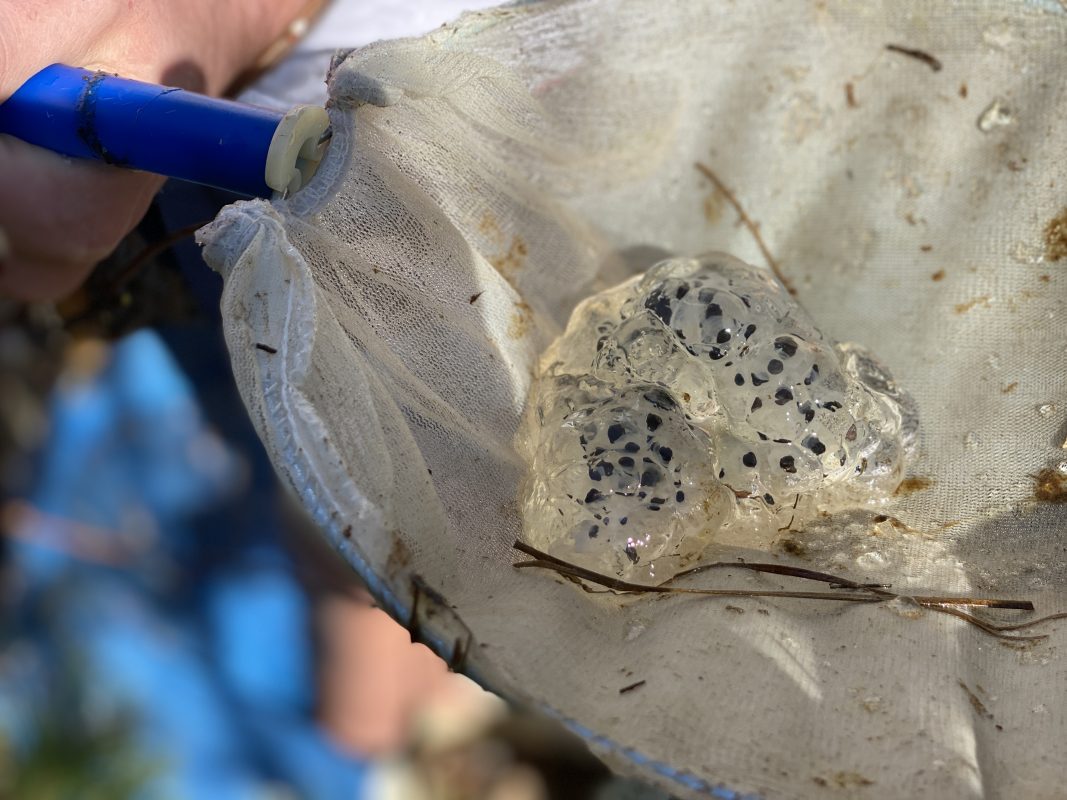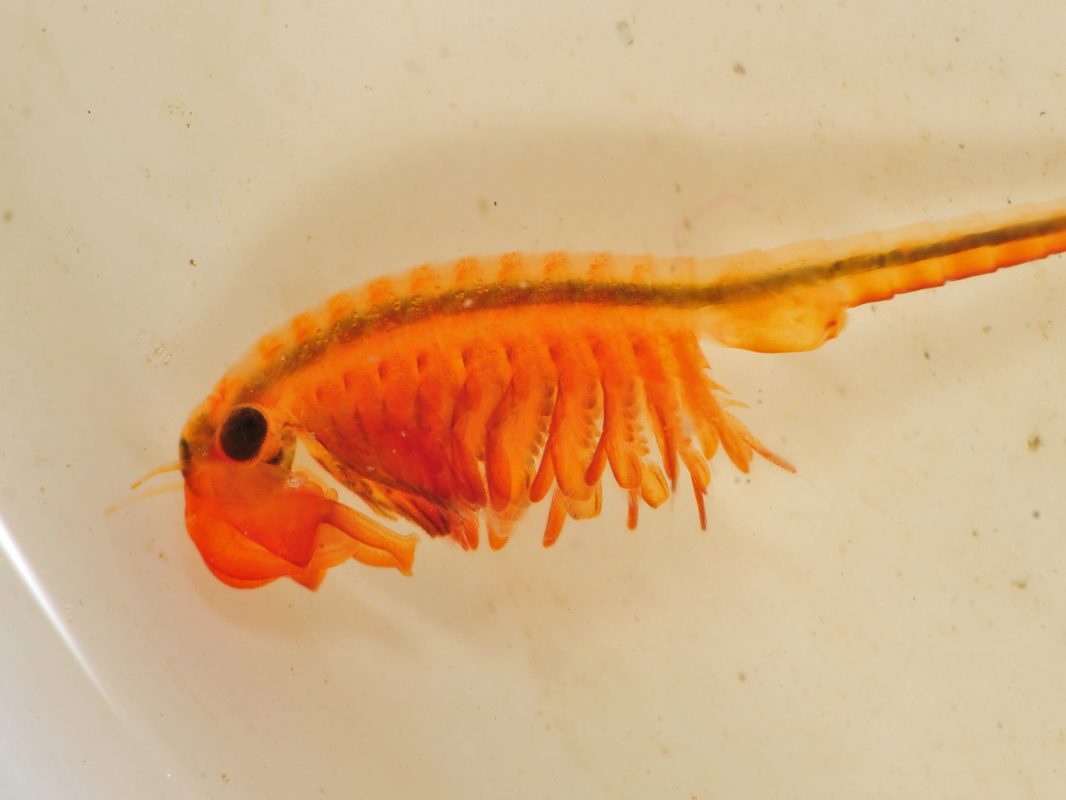Nellie Wilson has been volunteering with Hilltown Land Trust for the past two years as the Chesterfield Vernal Pool Representative in our Vernal Pool Plunge program, which seeks to protect these unique water bodies throughout our service area and that of our partners at Wild & Scenic Westfield River Committee.

HLT TerraCorps member Barry interviewed Nellie to learn more about why she cares about protecting these vital habitats.
Barry: Hi Nellie, thanks for talking to us today. Would you like to introduce yourself and your connection to the Hilltowns?
Nellie: My name is Nellie Wilson, and I’m the Chesterfield Vernal Pool representative. I live in West Chesterfield with my partner and have been living in the Hilltowns since 2012.
B: What are vernal pools, and how did you come to be involved as a town representative?
N: Vernal pools are ephemeral bodies of water that don’t have any flowing water entering or exiting them. They’re self-contained pools that fill up with rainwater, sleet, and snow melts, that periodically dry out completely. That lack of water flowing in and out – coupled with their occasional dry periods – means they are free from fish populations, so they are safer habitats for a number of species.
When I moved to West Chesterfield, I was interested in getting more involved with things happening in the community, and especially anything having to do with conservation or the outside world. I stumbled across the information from [Hilltown Land Trust and] Wild and Scenic Westfield [River Committee] about what they were doing with the Vernal Pool Plunge Program and attended their workshop, which was an evening lecture followed by a day out in the field. In the morning we went to a certified pool to look around, and I was able to find a fairy shrimp and I thought “Oh my gosh! This is so cool!”. After a time, I was working with another person who was the previous representative for the town of Chesterfield, and he had too much going on, so he passed that position onto me.
B: What do you when you go out and look at a vernal pool? What role do you play as a town representative?
N: When we visit vernal pools, we are collecting data on which species are present and the general condition of the pools in order to submit that information to the state Natural Heritage and Endangered Species Program. It’s very exciting to be doing the field work piece of citizen science – feeling like you can make a difference collecting this data and connecting with landowners so that their pools can be protected for the future. As a town representative, there is a good deal of relationship building and getting landowners interested in certifying and conserving the pools on their land.

B: What is certification and why is it important?
N: Vernal pools are special because they are unique habitats that support several species that live and reproduce exclusively in these environments. If you develop these areas, you are destroying biodiversity and removing important creatures from the food web. Amphibians are especially important indicators of the overall health of an ecosystem – they are kind of like the canaries in the coal mine in lots of ways – and keeping them protected is crucial. Certification protects the pool and a surrounding 100 foot radius from development, so you can’t build a house on top of the site, or log directly through an area with a vernal pool in it. In the state of Massachusetts there aren’t any built in legal protections for vernal pools, so it makes it that much more important that these spaces be certified to preserve and protect them.
B: How can people get involved in protecting vernal pools?
N: One way to get involved is if you know of a vernal pool, or if you think you might have a vernal pool on your property, contact the folks at Hilltown Land Trust to get the information for the representative in your town – we’d love to know about that, and come over to take a walk together and see if it has the indicators that could make it a certifiable pool. HLT also has several resources on its website, including a certification training presentation by Charley Eiseman. And I’m always happy to have people come out in the field with me to show them different things and look at pools together!
B: Before we go – what’s your favorite vernal pool critter?

N: Definitely fairy shrimp! There is something kind of miraculous about these little crustaceans – these weird, tiny, shrimpy things that only exist inside of vernal pools. With salamanders and frogs, they start their life in pools, and come back to reproduce, but fairy shrimp have their whole existence inside these ephemeral pools – it’s just really miraculous. Seeing them is one of those experiences of awe and wonder where you think “Wow, there is so much going on in the world that we have no idea about.” They’re pretty special creatures.
For more information on how you can help protect vernal pools, visit www.hilltownlandtrust.org/vernal-pool-plunge, or email contactus@hilltownlandtrust.org.
This interview has been edited for length and clarity.
